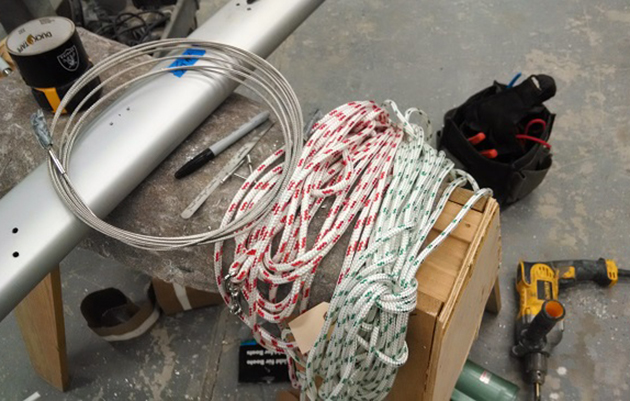Jonty Pearce continues maintenance on Aurial to prepare her for the season ahead
All across the Northern Hemisphere yachtsmen and women will be hard at work scraping, sanding, and stripping off old antifoul in preparation for applying their new pots of liquid gold.
The joys of donning white paper suits, masks, and goggles forerun the revered ceremony of opening the first expensive tin before dipping brushes and rollers into the rich colour that will soon adorn the (usually) unseen parts of their darling’s hull.
But how long will we continue to be able to indulge in this annual delight?
There is no doubt that antifouling does what it says on the tin – that is, it deters or damages marine growth so that our boats do not become a habitat for plants or animals that live under the water.
This is considered acceptable as long as the antifouling preparation remains on the hull and does not leach out into the waters that our yachts sail in.
Nothing is 100%, and it is inevitable that, for example, eroding antifoul will wear away into the sea; regulations state the quantities permitted.
If those quantities are exceeded, or if the biochemical poisoning power of the antifoul is deemed unacceptable, then that particular product risks becoming banned. And as more and more concoctions are barred from the chandler’s shelves, we have to wonder what we shall be left with.
The options available to yachtsmen centre around eroding paint, hard paint, copper in epoxy and related products, and ‘slippery’ surfaces that prevent marine life getting a grip.
Aurial’s neighbour relies on an ultrasonic system powered by a wind generator; the lack of weed on her waterline seems to indicate good efficacy, though an antifouling layer probably backs up the sonic deterrent. I just hope that Aurial’s proximity gives her some additional protection.
No matter which system is your choice, however, attention has to be given to its application and removal.
Long gone are the days when, having scraped the remaining antifoul off your hull onto the boatyard floor, a blast of the hose could direct the debris into a drain or over the harbour wall before throwing the empty tins and used brushes and rollers into nearby gash bins.
Continues below…
Jonty Pearce: New halyards for old?
Jonty Pearce carries out some serious mast maintenance to prepare Aurial for the season ahead
Jonty Pearce: Spring has sprung – but did anyone tell The Beast from the East?
Jonty Pearce reflects that despite the recent weather, spring - and the sailing season - are well on their way
Correct and proper disposal is now the order of the day; effective collection procedures and disposal points need to be in use to prevent unwanted escape of toxic material into our watercourses.
Why do we wear paper suits, masks, and goggles? Because the splatter of paint from our fast-spinning rollers is harmful to us as well as to the environment.
If we do not toe the line and execute proper application and disposal procedures the option of performing the Spring Antifoul Fandango will be removed from us and passed over to the professionals.
Boatyards would charge their fee, and invest the proceeds in special antifoul stripping and application areas where containment of toxic waste and splatter was regularly monitored to ensure that it achieved the necessary standard.
Our only way to avoid this expense and complication is to ensure that we ALL pedantically follow the guidelines and protocols set down for antifoul renewal.
What of moving across to other antifouling options?
Ten years ago Carol, my 84 year old mother, and I covered Aurial’s bottom in Coppercoat.
It remains effective and we are delighted with it, though my mate Simon was disappointed in its performance on his own boat and has just spent Easter covering his hull with traditional antifouling paint – it seems that different antifouls work better in some areas than others.
Ultrasonic protection does not seem to have swept the market clean, while ‘slippery’ Teflon type paint has not yet become a general favourite.
We have to trust that new antifoul developments will outstrip the loss of traditional applications, and maintain our faith that such changes are for the genuine benefit of the environment rather than for the ongoing job security of the paper pushers.
For now, I will continue to admire Aurial’s clean Coppercoated bottom and smile until copper, too, is banned.






